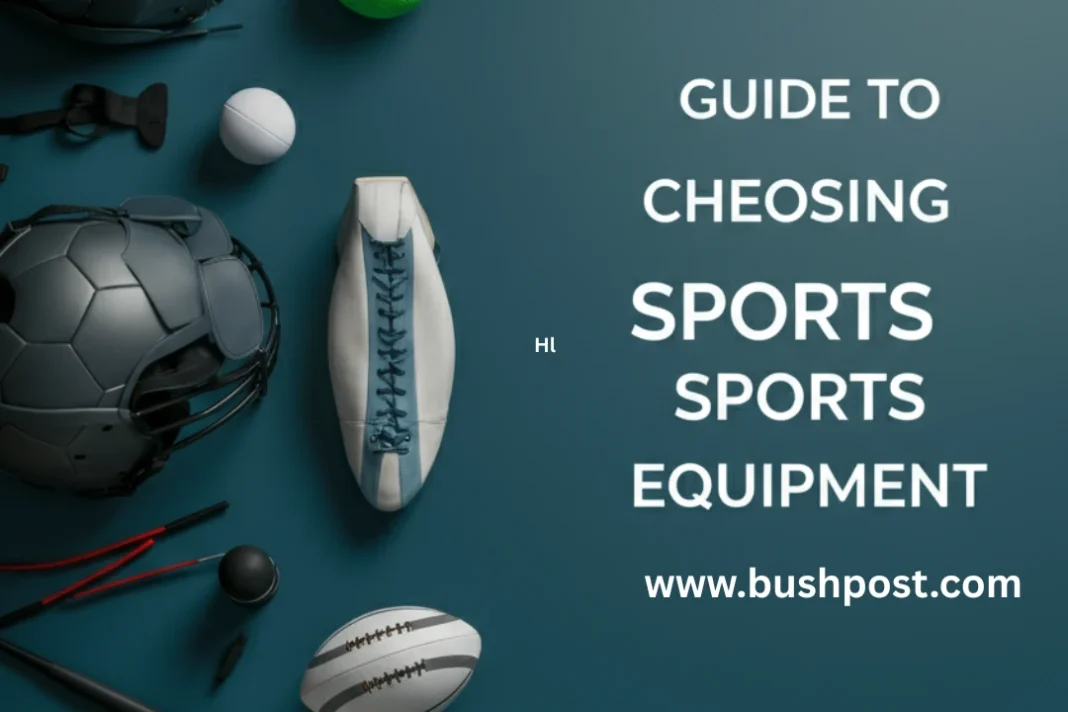When it comes to getting the most out of your game, the equipment you use makes a big difference. Whether you’re just starting out or you’ve been on the field for years, the right gear can boost your confidence, reduce injuries, and help you enjoy every moment. This guide to choosing sports equipment will help you sort through the options and find what truly matters for your needs.
Assess Your Skill Level and Goals
Before picking out any piece of equipment, think about your current experience in the sport and what you hope to achieve.
Beginners: Start Simple
If you’re new, stick to the basics. Look for gear that is affordable, comfortable, and prioritizes safety over advanced features. Your main goal should be to build skills and develop a feel for the game.
Intermediate Players: Upgrade as You Grow
Once you’ve mastered the basics, you’ll notice the limits of starter gear. At this stage, consider equipment that allows for more adjustment and better performance. Ask teammates or coaches for recommendations that fit your style of play.
Advanced Competitors: Invest in Performance
Are you training for competition or playing at a high level? Specialized gear made for competition or maximum performance will provide noticeable benefits, though higher-quality equipment often comes with a bigger price tag.
Make Safety and Fit Your Top Priority
No matter your skill level, your equipment should protect you and fit correctly.
Finding the Right Fit
Try everything on—don’t trust size charts blindly. Test out helmets, shoes, and pads to make sure they stay snug but not tight, and don’t shift when you move. This holds true for kids, too, as they grow out of gear quickly.
Look for Safety Approvals
Helmets, guards, and other protective gear should meet national safety standards. Look for labels and certifications from official organizations so you know your safety is never guesswork.
Material, Quality, and Durability Matter
The materials used in sports gear can make a big difference, both in performance and in how long your equipment lasts. Higher-quality construction stands up better to regular use and is often worth the investment. Checking out customer reviews, sports forums, and even asking at your local store can point you to the most durable options for your favorite activities.
Have a Budget—and Stick to It
Sports gear can get pricey, but that doesn’t mean you have to blow your savings.
Tips for smart spending:
- Know average prices: Research before you buy so you know what’s fair.
- Check for deals: Sales, outlets, and quality used gear can all save you money.
- Spend smart: Invest more in equipment that protects you, like helmets or pads; you can go lighter on extras and accessories.
Do Your Research
Don’t let flashy ads or trendy brands make your decision. Dig a little deeper before you buy.
Research tips include:
- Read athlete reviews: Find out how the gear stands up under real use.
- Ask experienced players: Friends, teammates, or coaches can share what’s worked for them.
- Try in person: Visit specialty shops to get advice and hands-on experience before you decide.
Taking these steps will help you choose sports gear you’ll love using, rather than something that just looks good online.
Conclusion
Finding the best sports equipment means knowing yourself, setting safety and fit as priorities, aiming for quality, staying within your budget, and doing thorough research. For more in-depth tips and comparisons, you can also check out REI’s expert advice on choosing sports gear. By following this guide to choosing sports equipment, you’ll be well-equipped to play safely and confidently, no matter your skill level. Take your time, enjoy the process, and remember—great games start with the right gear.
Frequently Asked Questions (FAQs)
1. How often do I need to replace my sports equipment?
Replace any equipment that shows clear signs of damage or excessive wear—such as cracked helmets, worn padding, or loose laces. For safety gear, it’s best to follow the lifespan suggested by the manufacturer.
2. Can I safely use second-hand sports gear?
Yes, for many items like bats or rackets, used equipment can be a good value. Avoid second-hand helmets and protective gear, since unseen damage can lower their protective ability.
3. Is expensive equipment always better?
Not necessarily. The right fit and suitability for your skill level matter much more than price; sometimes, mid-range gear is perfect for your needs.
4. What should I look for when buying a new helmet?
Make sure the helmet fits comfortably and doesn’t move around on your head. Also, always check that it carries the latest safety certification for your sport.
5. What gear is absolutely essential for my sport?
Footwear designed for your activity is a must—good shoes protect your feet and help prevent injury. And for contact or high-speed sports, a properly fitted helmet is the most important piece of safety gear.
You may also read:Best Sports Shoes for Beginners


